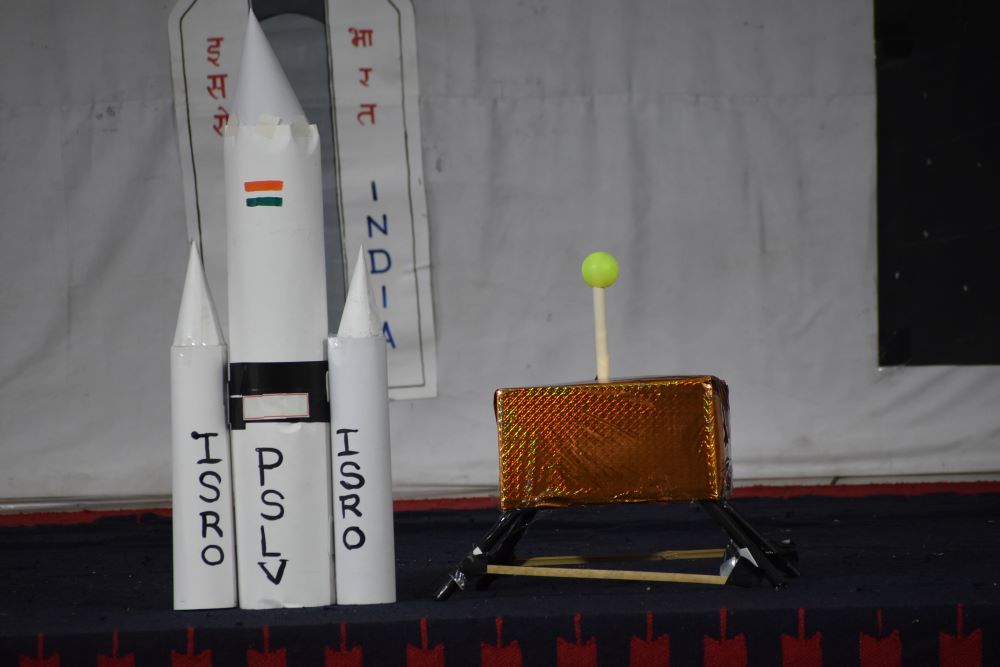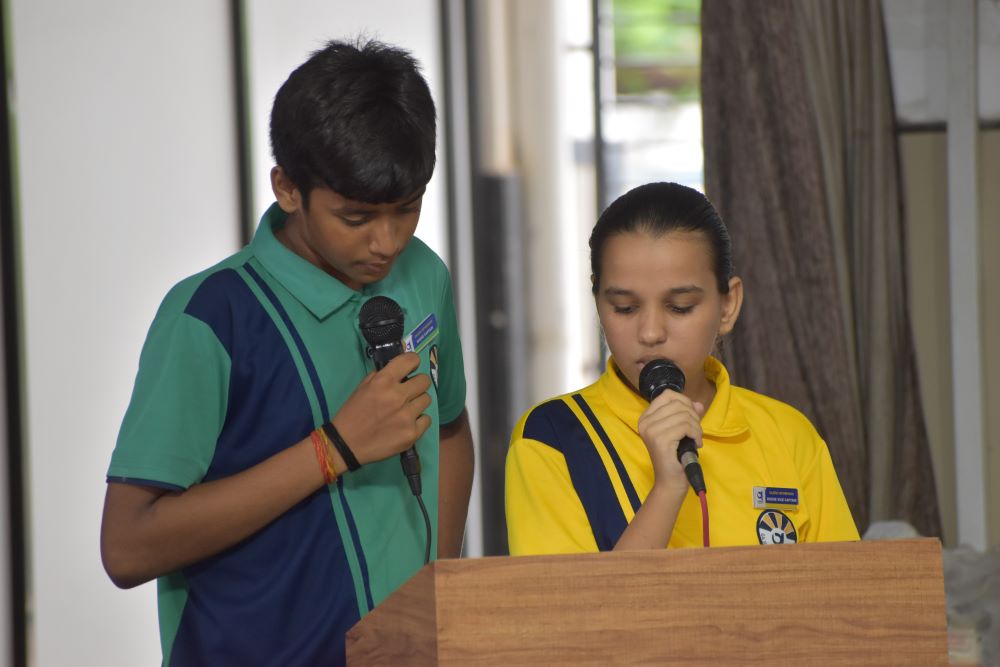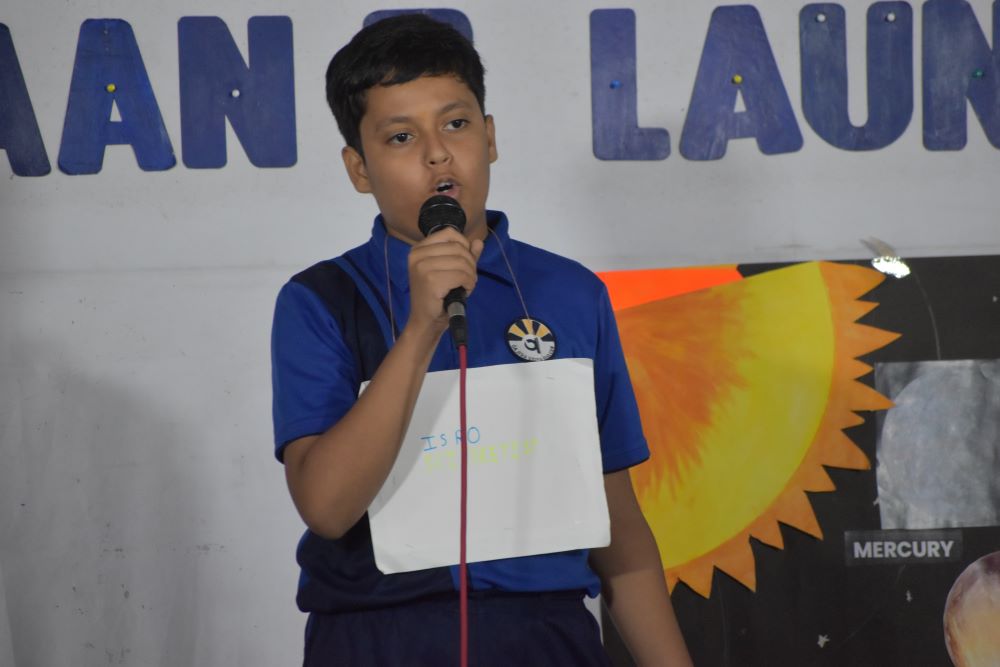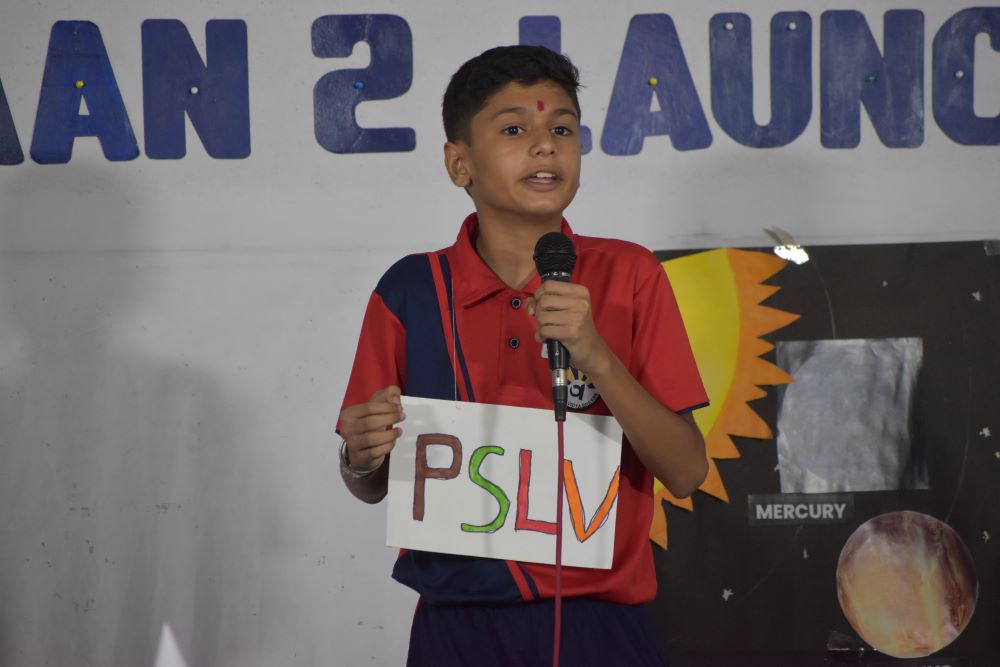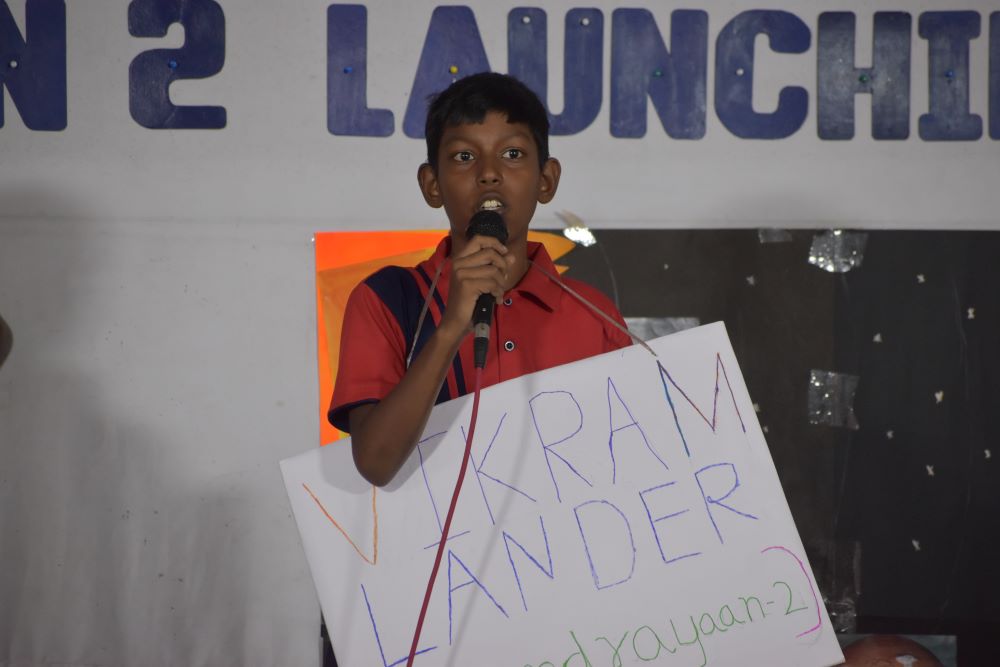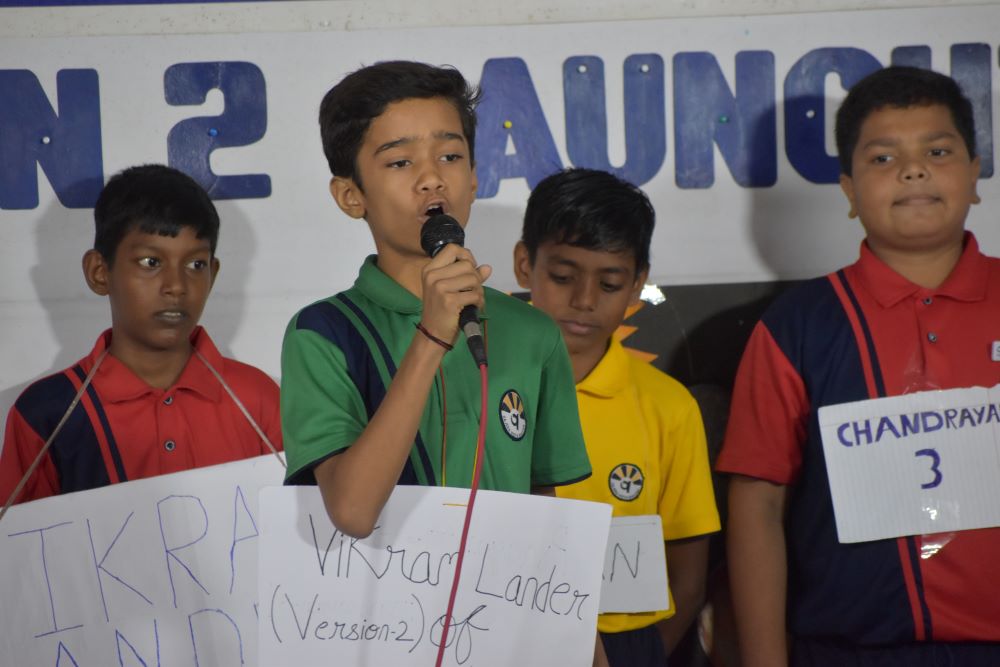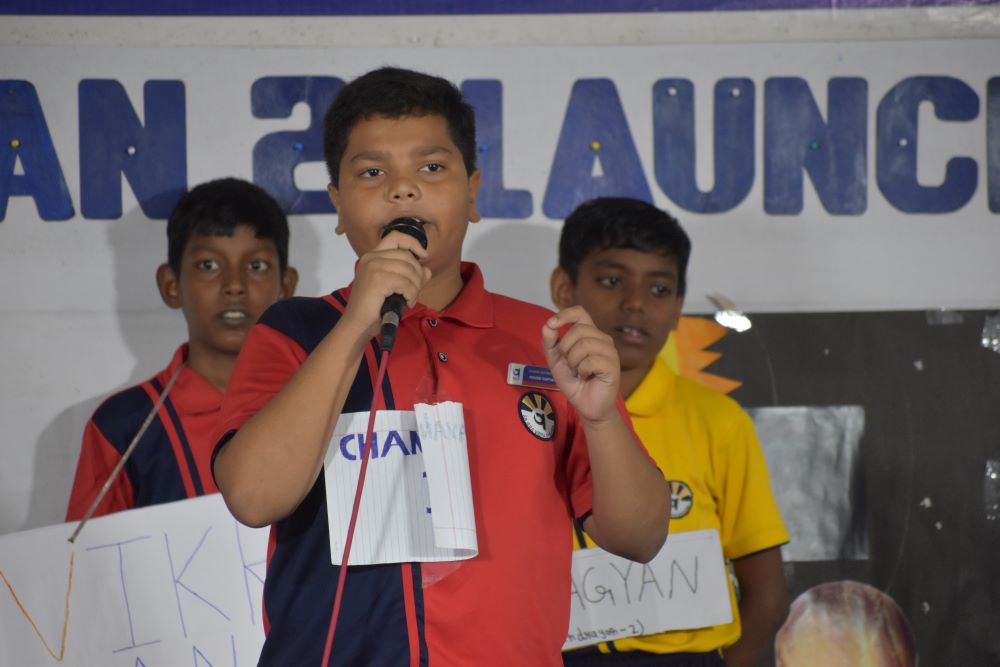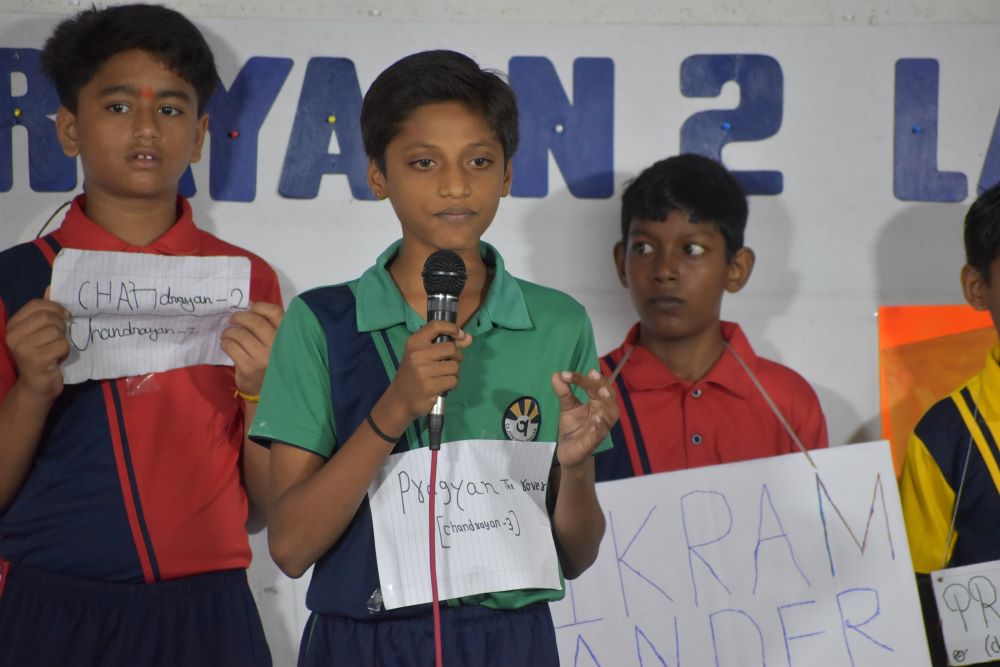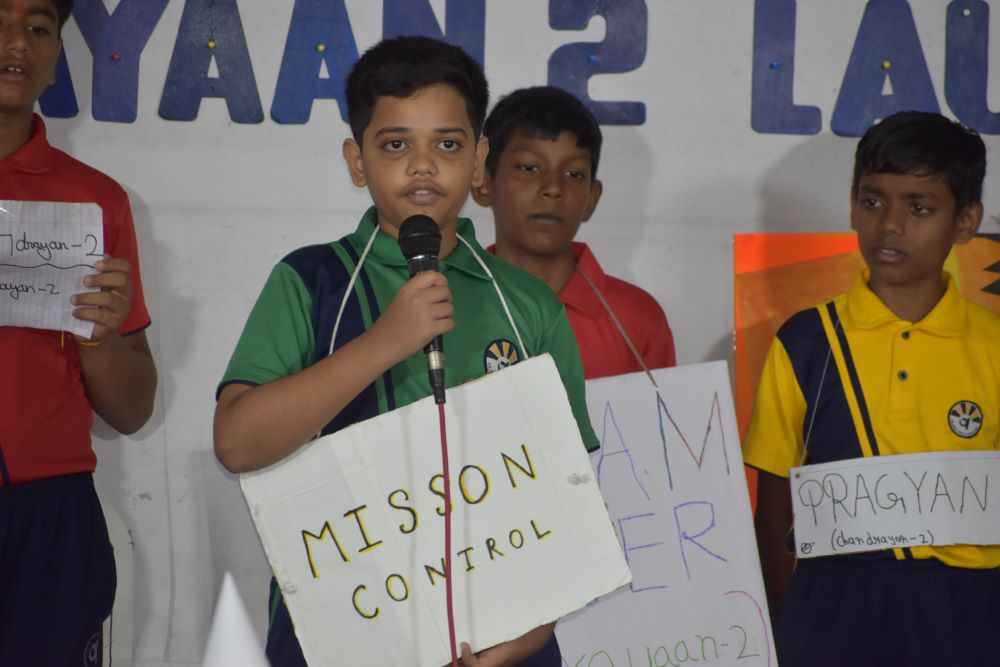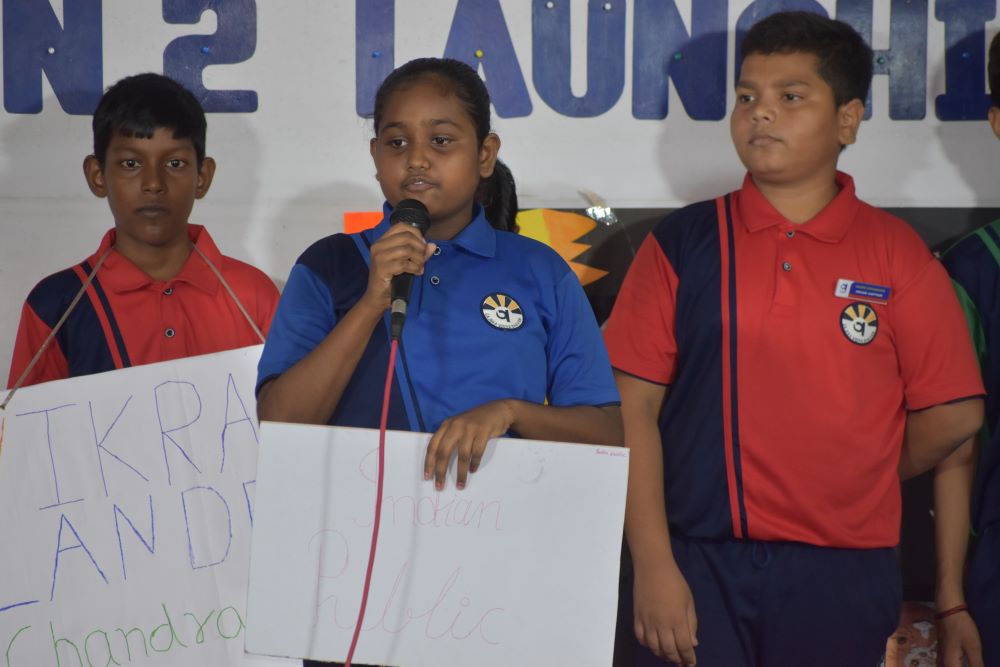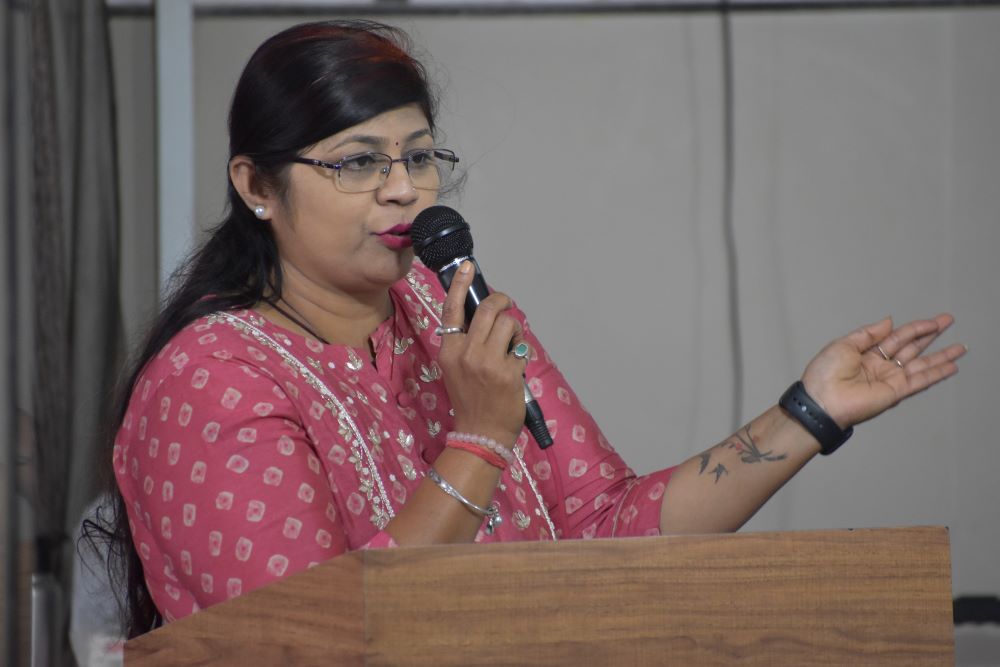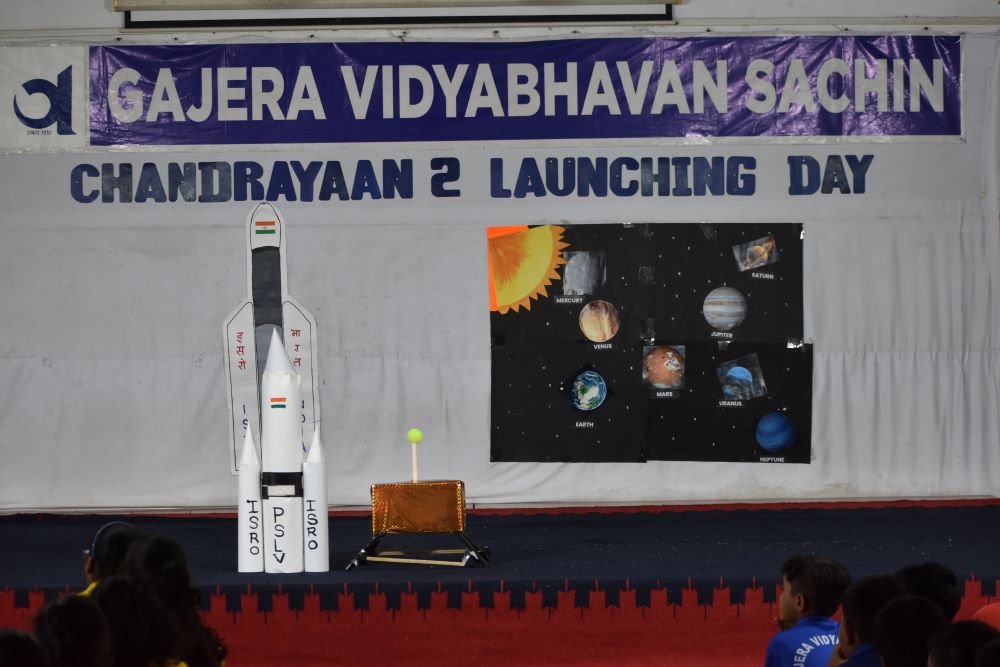On this momentous occasion, our school commemorated the launch of Chandrayaan-2, India’s second lunar exploration mission, which lifted off on 22nd July 2019. The event served as a tribute to the Indian Space Research Organisation (ISRO) and its relentless pursuit of excellence in space science. To honour this historic mission, our students engaged in a variety of activities—ranging from informative presentations to detailed model-making—showcasing their understanding of each component of the mission from launch to lunar landing.
Contrary to the common belief that Chandrayaan-2 was launched using the PSLV (Polar Satellite Launch Vehicle), our students rightly pointed out that the spacecraft was launched by the GSLV Mk III-M1—India’s heaviest and most powerful launch vehicle, fondly nicknamed ‘Baahubali’. The rocket stands at 43.43 meters tall and weighs 640 tonnes, comprising three stages: a solid booster, a liquid core stage, and a cryogenic upper stage. Students built an impressive scale model of the GSLV Mk III using eco-friendly materials, accurately representing its design and structure.
The mission included three main components: the Orbiter, the Vikram Lander, and the Pragyan Rover. The students explained that the Orbiter, which is still operational, continues to circle the Moon and transmit valuable data back to Earth. It is equipped with high-resolution cameras and radar instruments that help in mapping the lunar surface and studying the Moon’s thin atmosphere. Using charts and visual aids, the students demonstrated how this module plays a crucial role in lunar exploration.
The Vikram Lander, named after Dr. Vikram Sarabhai, was designed to make a soft landing on the Moon’s south polar region. Although the lander lost communication just moments before landing, its journey marked a significant technological achievement. Students constructed a 3D model of the lander, showcasing its legs, antennae, and camera systems. They also explained how its descent was controlled and what scientific instruments it carried.
Housed within Vikram was the Pragyan Rover, a 6-wheeled robotic vehicle weighing about 27 kilograms. It was meant to explore the surface, analyze soil samples, and send data back to the lander. To simulate its movement and functionality, our students used remote-controlled miniature rovers and enacted how Pragyan would have navigated the lunar terrain. The students were particularly fascinated by its solar-powered systems and scientific instruments, which were designed to operate autonomously on the Moon.
To bring the mission to life, a creative exhibition was held where students displayed handcrafted models of each module. A timeline of the entire Chandrayaan-2 journey was presented in the form of an interactive wall, complete with visuals, mission facts, and key milestones. One of the standout exhibits included a working model of the rocket launch and lander deployment using LED lights and basic electronics. The enthusiasm and effort shown by the students made the entire experience truly enriching.
Reflecting on the mission, students shared their admiration for ISRO and the many lessons learned from Chandrayaan-2. One student remarked, “Even though the lander didn’t succeed, the mission taught us the power of perseverance and innovation.” Another added, “We now understand how rockets work, and making the GSLV model was like building a dream with our own hands.”
The celebration concluded with a collective message of appreciation and pride for ISRO’s ongoing efforts in space exploration. Chandrayaan-2, despite its partial failure, laid the foundation for Chandrayaan-3’s success, and its Orbiter continues to serve as a scientific asset. Our students now dream bigger, aiming to one day become the scientists and engineers who will carry India’s space story forward.
